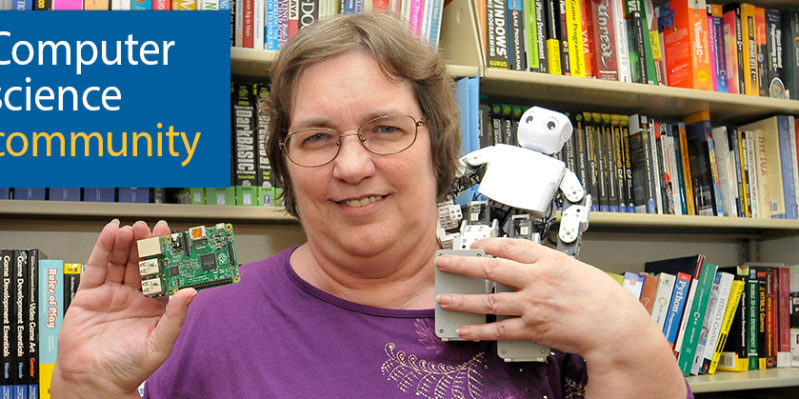
 Computer science is still one of the most underrepresented STEM (science, technology, engineering, and math) fields when it comes to the number of women employed in the industry. According to a January article in National Geographic, the National Science Foundation estimates that women make up less than 20 percent of graduates earning computer science bachelor’s degrees. San Jacinto College computer science professor Pamela Betts is an example of what can happen when you stop listening to the majority and make your own mark on the path you choose.
Computer science is still one of the most underrepresented STEM (science, technology, engineering, and math) fields when it comes to the number of women employed in the industry. According to a January article in National Geographic, the National Science Foundation estimates that women make up less than 20 percent of graduates earning computer science bachelor’s degrees. San Jacinto College computer science professor Pamela Betts is an example of what can happen when you stop listening to the majority and make your own mark on the path you choose.
“I like being on the cutting edge of technology,” said Betts. “Discovery is important to me.”

Computer science professor Pam Betts shows off some of the projects her Honors class is working on: a robot that students programmed to perform certain actions by using commands from their cell phones and an example of a Raspberry Pi computer students will program for another project.
Photo credit: Andrea Vasquez, San Jacinto College marketing, public relations, and government affairs department.
Before she began teaching at San Jacinto College, Betts worked in the computer industry for 26 years. “In 1985, I worked on an Exxon built table-driven Data Acquisition and Control System for laboratory and pilot plants. In 1990, I worked with a team of people at Exxon in Baytown, and we implemented the first non-proprietary TCP/IP-based (Transmission Control Protocol/Internet Protocol) network in all of Exxon. That was important because at the time, the Exxon plant only used a DecNet network with Honeywell instrumentation. Our team discovered how to make different vendor network systems work together, which we were told would be impossible.”
As an educator, Betts strives to expand learning and bridging opportunities. Whenever possible, Betts has her students work in teams, since most of the projects done in industry are assigned to teams. This helps students see things from different perspectives and allows them to think of different ways of problem solving. “Many young girls think of science as just being by yourself in a lab all day, but science is a communal endeavor, not just a solo one,” said Betts. Having walked in those same shoes being the only female or one of the only females in the workplace, Betts says that encouraging young girls and women to embrace their excellence is a powerful thing, that shouldn’t be discouraged out of fear of failure.
“One good way to collaborate with others is to find volunteer opportunities at a school or community program that interests you and lets you build leadership skills such as Business Professionals of America (BPA), First Robotics Competition (FRC), Marine Advanced Technology Education (MATE), science fairs, etc. Along with leadership skills, these organizations and events let you see the benefits of working on teams and what you can accomplish together.”
Teaching is now her passion, and getting the opportunity to help shape the minds of future software engineers, programmers, network security administrators, and gaming and simulation designers is something Betts loves. “If I can help students fuel their passion for knowledge and realize how to reach their career goals, I’ve done what I’ve set out to do.”
– Andrea Vasquez
